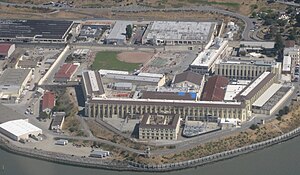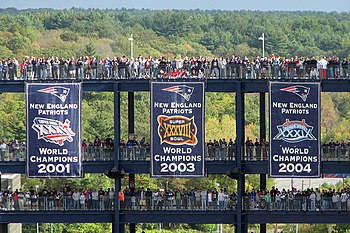- RT @ScottATaylor: The Guys on "Pickers" should just follow the "Hoarders" teams around- perfect mashup #
- PI/PNK test: http://su.pr/2umNRQ #
- RT @punchdebt: When I get married this will be my marital slogan "Unity through Nudity" #
- http://su.pr/79idLn #
- RT @jeffrosecfp: Wow! RT @DanielLiterary:Stats show 80% of Americns want to write a book yet only 57% have read at least 1 bk in the last yr #
- @jeffrosecfp That's because everyone thinks their lives are unique and interesting. in reply to jeffrosecfp #
- @CarrieCheap Congrats! #CPA in reply to CarrieCheap #
- @prosperousfool I subscribe to my own feed in google reader. Auto backup for in between routine backups. Saved me when I got hacked. in reply to prosperousfool #
- @SuzeOrmanShow No more benefits? I bet the real unemployment rate goes down shortly thereafter. in reply to SuzeOrmanShow #
- Losing power really make me appreciate living in the future. #
The High Cost of Keeping Richard Ramirez in Prison

Serial killers in the United States often gain cult status due to their strange courtroom antics and dramatic personalities. Recently deceased death row inmate Richard Ramirez was definitely one of the most famous serial killers of all time before he passed away of liver failure in California’s San Quentin State Prison.
After a dramatic arrest in 1985 in East Los Angeles by residents who recognized Ramirez from photographs displayed all over the news, Ramirez would sit in jail for years while awaiting a trial that finally began in 1989. There would be no more expensive trial in the history of Los Angeles County except for the O.J. Simpson trial that occurred a few years later.
At a cost of $1.8 million dollars, Los Angelinos would pay dearly for the privilege of trying Ramirez in a court of law. Incredibly, however, this massive sum wasn’t the only cost associated with this vicious serial killer. Because he was sentenced to death and due to the incredibly long appeals process associated with death row inmates, Ramirez sat in jail for over two decades without any fear of actually being put to death by the state of California.
Over the past hundred years, the number of individuals incarcerated in the United States has ballooned from a few hundred thousand people to almost 2.5 million prisoners. The most expensive people to incarcerate are death row inmates, who sit in a type of solitary confinement for decades. A moratorium on future executions in California has ensured that inmates like Ramirez have been costing taxpayers millions of dollars for housing and appeals with no likelihood of being put to death.
According to the American Civil Liberties Union, there are around 700 people sitting on death row in California, which require a massive investment of tax dollars. The state’s ongoing budget crisis and inability to balance its budget has put great strain on the prison system to house so many death row inmates at such an incredible cost.
Richard Ramirez’s untimely death at the age of 53 and his decades-long residency within a state prison brings to light a disturbing fact: more inmates die of natural causes while on death row than are actually put to death. Whether support for the death penalty exists or not, the billions of dollars spent by the state to keep inmates on death row has resulted in just 13 executions since the late 1970s.
A study in 2011 that was conducted by a judge and professor in the state suggested that California has spent over $4 billion since the death penalty was reinstituted. Out of those funds spent, at least a billion dollars was used for housing and incarceration of the inmates, including serial killers like Richard Ramirez.
A further study presented by the Commission on the Fair Administration of Justice in 2008 suggested that keeping the system intact with inmates on death row would cost around $137 million dollars a year. On the other hand, if California was to commute those death sentences to life in prison and abolish the death penalty, the yearly cost would drop to $11.5 million a year.
Offering the families of victims of death penalty-worthy crimes the chance to see a killer or other criminal experience the ultimate punishment may offer some sort of closure. Unfortunately, with the expectation that individuals on death row are more likely to die of natural causes than be put to death in California, the implementation of the death penalty in the state must be reexamined.
Related articles
Expensive Cheese
Saturday morning, I woke up to a room-temperature refrigerator. I dislike drinking milk that’s 40 degrees warmer than I’m used to.
We called the repairman who showed up at 9PM and poked around in the fridge for a bit before announcing that he didn’t have the needed parts in his truck.
The parts came Monday. The next repairman got there Tuesday afternoon. For those of you keeping track at home, that’s nearly 4 days without a refrigerator.
That poor bacon.
Tuesday’s repairman didn’t think highly of Saturday’s. Apparently, the two parts Saturday ordered never go bad at the same time, so he was guessing.
He also didn’t notice the slice of individually wrapped American cheese that had slipped between a shelf and one of the cold-air vents, preventing any air flow at all.
Grr.
I wish I would have noticed that on Saturday. I now own the most expensive cheese in the world. It’s not Pule, which comes in at $616 per pound. This lowly slice of American cheese cost me nearly $200. At one ounce per slice, that’s $3200 per pound. Of course, I’m counting the lost food. My hamburger, eggs, bacon, milk, and mayonnaise are gone, along with every other perishable bit of food we had on hand.
I don’t know how much the repairs cost. Saturday’s visit, minus the parts, was billed at $95. I didn’t see the total for Tuesday’s visit.
We pay for a repair plan through our gas company. For around $15 per month, we get a list of appliances protected. We don’t have to worry about our washer, dryer, water softener, stove, refrigerator, or our sewer main. Assuming Tuesday’s visit was billed the same as Saturday’s, this one repair paid for the plan for an entire year. When you count our sewer main–which backs up with tree roots once a year and costs at least $200 to fix–the repair plan is definitely worth it for us.
When we get tenants in my mother-in-law’s house, we’ll have the repair plan set up there, too.
Do you use any kind of repair plan? How is it working out for you?
Why I Hate Payday Loans
I hate payday loans and payday lenders.
The way a way a payday loan works is that you go into a payday lender and you sign a check for the amount you want to borrow, plus their fee. They give you money that you don’t have to pay back until payday. It’s generally a two-week loan.
Now, this two week loan comes with a fee, so if you want to borrow $100, they’ll charge you a $25 fee, plus a percent of the total loan, so for that $100 loan, you’ll have to pay back $128.28.
That’s only 28% of actual interest; that’s not terrible. However, if you prorate that to figure the APR, which is what everyone means when they say “I’ve got a 7% interest rate”, it comes out to 737%. That’s nuts.
They are a very bad financial plan.
Those loans may save you from an overdraft fee, but they’ll cost almost as much as an overdraft fee, and the way they are rigged–with high fees, due on payday–you’re more likely to need another one soon. They are structured to keep you from ever getting out from under the payday loan cycle.
For those reasons, I consider payday loan companies to be slimy. Look at any of their sites. Almost none are upfront about the total cost of the loan.
So I don’t take their ads. When an advertiser contacts me, my rate sheet says very clealy that I will not take payday loan ads. The reason for that is–in my mind–when I accept an advertiser, I am–in some form–endorsing that company, or at least, I am agreeing that they are a legitimate business and I am helping them conduct that business.
In all of the time I’ve been taking ads, I’ve made exactly one exception to that rule. On the front page of that advertiser’s website, they had the prorated APR in bright, bold red letters. It was still a really bad deal, but with that level of disclosure, I felt comfortable that nobody would click through and sign up without knowing what they were getting into. That was a payday lender with integrity, as oxymoronic as that sounds.
What is the financial prize for winning the Super Bowl?

When you win the Super Bowl, you get a big ring and your team takes home a giant trophy. But for most guys out on the field, there’s a bigger prize waiting elsewhere. There are financial incentives associated with winning the big game. Some of them are direct, while others come later, in ways that most people will never see. The financial incentives are even different for coaches, players, and the owners who already have billions of dollars anyway. So how do the finances of the Super Bowl shake out?
A Direct Bonus
When Seahawks coach Pete Carroll threw away the Super Bowl, he cost his players and coaches a significant amount of money. Each player from the winning team receives $97,000 as a bonus. The losers are not left empty-handed, of course. They make off with a cool $49,000 each. Still Carroll’s mistake cost his players $48,000, as they had to settle for the consolation prize.
Endorsements Galore
Where things really get interesting is when one considers the marketing gains that players make when they become Super Bowl champions. The calculations are necessarily very indirect when talking about things like sponsorship value, but there is definitely some benefit to winning the big game. In the wake of winning the Super Bowl in 2014, Seahawks cornerback Richard Sherman signed endorsement deals with Campbell’s, Nike, and Microsoft. Running back Marshawn Lynch used his Super Bowl win to propel him to a deal with Skittles.
It’s difficult to know just how value the Super Bowl win was to these players and their financial futures, but it’s clear that winning the big game elevates players in the marketing sense.
Ownership Rewards
Super Bowl wins work out well for owners, too. The New England Patriots have won four big games over the last 15 years. In doing so, Tom Brady and company have turned the franchise into one worth over $2 billion. In addition, the Patriots “brand value” alone is worth $350 million. Some of these gains would have happened without wins in the big game, but it’s clear that taking home trophies helped the franchise grow in value.
What’s in it for coaches?
Winning a Super Bowl is the brass ring for coaches, and they are often defined by their ability or inability to take home a ring. When Pete Carroll led the Seahawks to last year’s Super Bowl victory, he was signed to a five-year extension that made him the NFL’s highest paid head coach at around seven million bucks per year. While he might be the goat in this year’s Super Bowl for his horrific goal line call, he’s living proof that if you can win the Super Bowl at least once, you can cash in on financial rewards in a big way.
There’s something to be had for nearly everyone when a Super Bowl win is in the offing. This year, the Patriots will get to enjoy those rewards. Next year, it’s bound to be some other team, some other coach, and some other owner.








